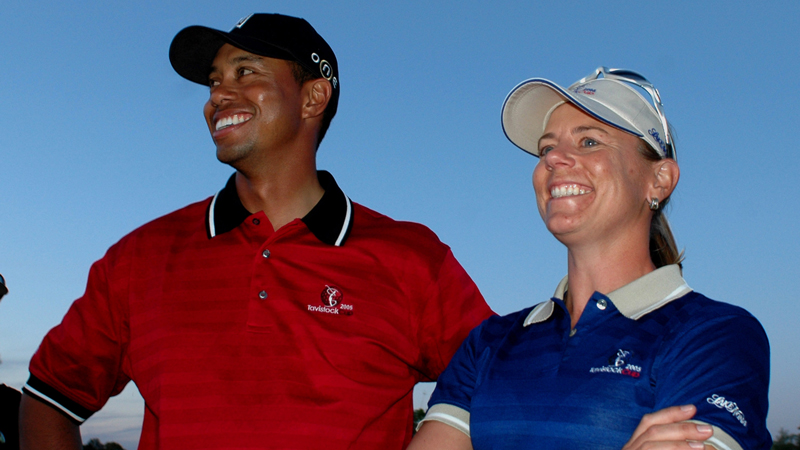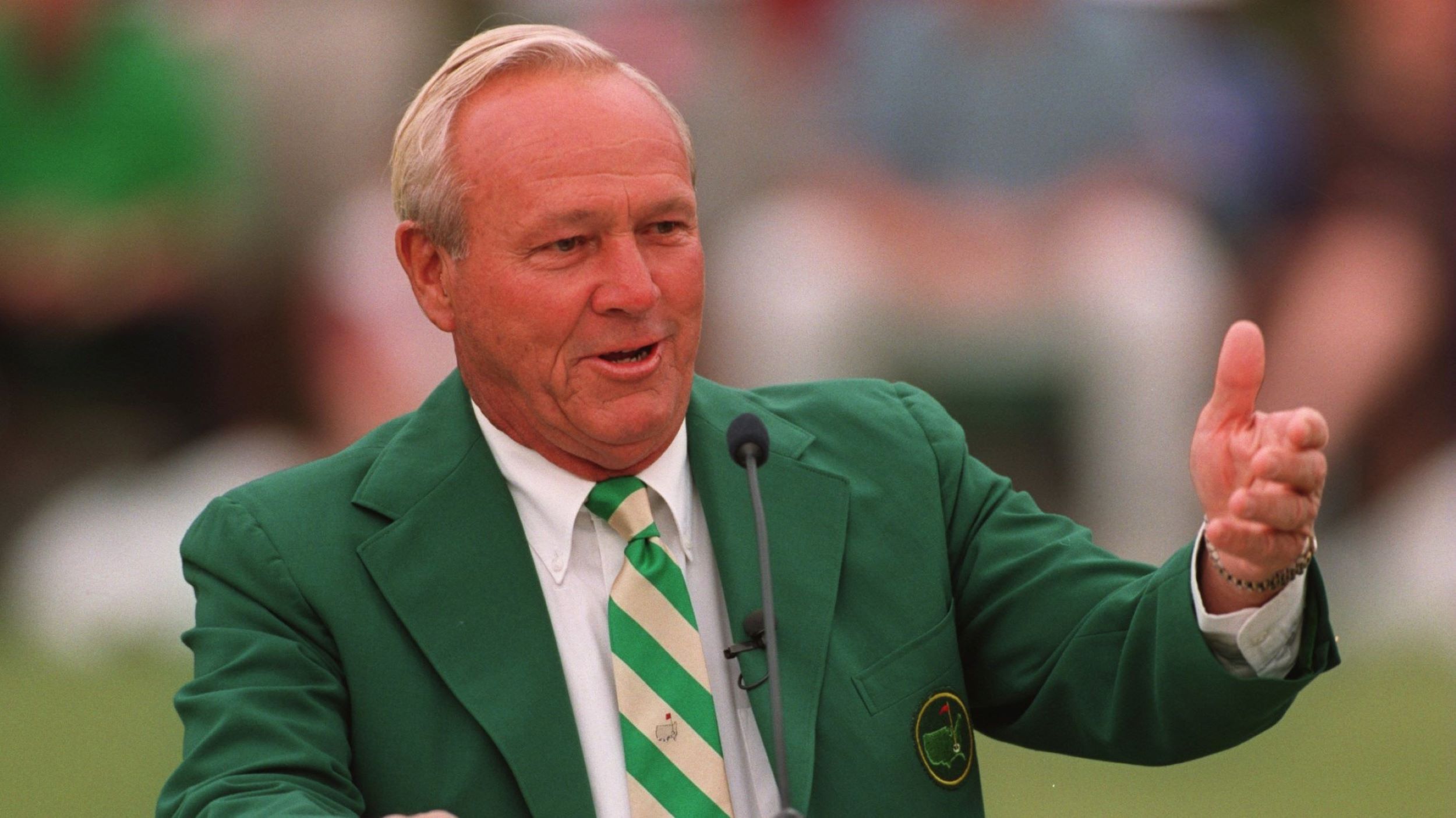Golf’s Gender Pay Gap – How To Close It?
How can prize money at the elite level be brought in line?


A gender pay gap continues to exist at the elite level of professional golf. What can be done to achieve parity in prize money?
Golf’s Gender Pay Gap – How To Close It?
Golf is one of the world’s most lucrative sports, with top participants in the men’s and women’s games amongst the highest paid sportspeople on the planet.
Yet, it remains one of the few sports where there’s a prize money pay gap between the genders at elite level.
The BBC’s recent Prize Money in Sport study showed that golf is one of only three of the 48 sports included (football and basketball being the others) where at least one major competition does not offer equal prize money for men and women.
It’s vital for the future of golf that the sport is fair and equal on all levels, so closing this pay gap must be a key objective.
Unfortunately, the current model of the professional game is such that achieving the goal is extremely challenging. The solutions are by no means straightforward.
Get the Golf Monthly Newsletter
Subscribe to the Golf Monthly newsletter to stay up to date with all the latest tour news, equipment news, reviews, head-to-heads and buyer’s guides from our team of experienced experts.
A key issue for golf with regard the gender pay gap is the extent to which the men’s and women’s games are separated by the logistics of the sport.
It’s simply not possible to host the biggest events in the men’s and women’s game at the same place at the same time, as per Wimbledon, or the Diamond League Athletics for example.
The Majors
Consider the Major championships. They take place on different courses in different weeks.
As such, they have different budgets, sponsors, partners and generate different levels of interest and income.
At this stage, the men’s events generate more money and offer bigger prize funds as a direct result.
Despite huge efforts within the game, from the governing bodies down to the grassroots to grow interest and participation in women’s golf, there’s still a huge way to go before parity is reached in terms of the split of male and female golfers globally.
The R&A, USGA and the PGA of America each run a men’s and women’s Major and face the commercial challenges explained above of hosting separate events, with separate profit and loss sheets attached.
At this stage, the only way they could achieve equality on prize money would be to subsidise the women’s events.
They could reduce prize funds in the men’s events and feed across, but that would risk diminishing the status of the men’s events, which wouldn’t be beneficial to the overall health of the sport.
The money would have to come out of the organisation’s coffers then.
Not palatable for the finance departments perhaps, but in reality, the governing bodies look to reinvest all profits in the game via one route or another, and perhaps this is a route worth following.
It could be a key stepping-stone in the growth of women’s golf.
Expand the prize fund, expand interest and thereby drive future participation in golf… Invest now to reap the benefits in years to come.
Without doubt it’s something they are all considering.
“The US Women’s Open is the leader in purse in all of women’s golf, which requires disproportional investments into the championship compared to revenue generated,” the USGA’s chief brand officer Craig Annis told the BBC.
“We will continue to make investments that ensure the US Women’s Open remains the premier event in women’s golf through its purse, broadcast, host sites and player experience, as we drive toward the ultimate goal of purse parity.”
Regular Season
And then, within the men’s and women’s regular seasons, there are multiple factions that make closing golf's gender pay gap a challenge.
The main Tours are all separate entities and, to a large degree, whether they admit it or not, are competing with one another. And all, at their root, have the primary objective of turning a profit.
The PGA Tour generates huge revenues and offers massive prize money in order to draw the biggest names to its tournaments. The European Tour fights hard and does a great job of expanding golf’s global appeal.
It’s a similar story in the women’s game with the LPGA Tour generating considerable interest and income and the Ladies European Tour battling to keep pace.
Below that there are countless other tours in all parts of the world, for men and women, trying to appeal to the public and to earn money.
All these tours, from top to bottom, offer prize money that’s purely dictated by what they’re able to stump up based on the revenue they’re generating – gender doesn’t come into it.
To create gender equal prize money during the regular playing season, all these tours would need to come together and agree on set prize funds for different levels of tournaments using a tier system based on projected revenue and field strength.
But, even with that, more men’s events would achieve higher tier status owing to the higher revenues, and the larger tours would baulk at either reducing purses to accommodate the lower budgets of lesser circuits or being asked to supplement them.
A further step, (perhaps better to say leap or marathon,) would be required to achieve total equality –
The creation of a “World Tour” governing men and women. A merger of all of the current tours, with representation from the governing bodies, to create one overarching mega-committee running the highest echelons of tournament golf globally, with a principal circuit and managed feeder circuits… Offering equal prize money for men and women, at each level of professional competition.
Yes, as things stand, that possibility seems a long way off but prospects of a world tour within the men’s game increased when a “strategic alliance” between the PGA and European Tours was announced last year.
It’s also a great step forward that the LPGA and Ladies European Tour have been working together since the end of 2019.
And, with more mixed events featuring equal prize money, like the ISPS Handa World Invitational and the Scandinavian Mixed Tournament, plus increasing collaboration between the governing bodies to grow the game internationally, the green shoots of group enterprise are to be seen wherever one looks in the game.
Golf is an historic sport and the competitive side of it has grown up over decades from multiple starting points.
There now exists a number of excellent and forward-thinking bodies looking after the game, all with the objective of securing its bright future.
Through ever increased co-operation between those bodies, golf will continue to become more unified and equal – including the closing of golf's gender pay gap.
It may seem pie in the sky, but all the ingredients are there to be mixed, shaped and thrown upwards…
So where next?
As a starter for 10 – Prize money in the Women’s Majors continues to rise.
The prize fund for last year’s Women’s Open was $4.5 million – Up nearly 40% in the last two years.
The U.S. Women’s Open now offers a winner’s cheque of $1 million, twice what it was at the turn of the century.
The fact the LPGA and LET are working together, and that the LPGA is in a strategic partnership with the PGA Tour, is significant.
There are commercial and competitive benefits to be derived from these associations – not only shared knowledge, but also sponsorship and partnership deals that can reach across both the men’s and women’s games.
Then, a key next move will surely be to see a really significant co-sanctioned event.
We’ve seen these at a slightly lower level with the likes of the Vic Open.
But to really make an impact, a co-sanctioned PGA and LPGA Tour event with a, say, $9 million purse would generate huge excitement and exposure for the women’s game that could drive massive interest from the public, sponsors and broadcasters alike.
If the men are serious about helping the women grow revenue, then they have to play a part and one or two big co-sanctioned events would be a big step in the right direction.
The Olympics is a great event for showcasing women’s golf alongside the men and hopefully we’ll get to see this in Japan this summer.
Going forward, the possibility of a mixed Olympic event would be another way to raise the profile of women’s golf, thereby increasing its commerciality and driving prize funds upwards.
A simple way to ensure women’s golf has maximum time in the spotlight is to avoid clashes with the bigger men’s events.
Too often the women’s game is overlooked by broadcasters as top events are held in the same week as a big tournament in the men’s game.
Perhaps, one solution is for women’s golf is to reach out to new and different broadcasters, rather than the traditional golf providers: New outlets that would be hungry to push and promote the women’s game to a new audience.
It’s a long road with obstacles to overcome but with the collective will of the golfing community, the objective of bringing women’s prize money in line with the men is achievable.

Fergus is Golf Monthly's resident expert on the history of the game and has written extensively on that subject. He has also worked with Golf Monthly to produce a podcast series. Called 18 Majors: The Golf History Show it offers new and in-depth perspectives on some of the most important moments in golf's long history. You can find all the details about it here.
He is a golf obsessive and 1-handicapper. Growing up in the North East of Scotland, golf runs through his veins and his passion for the sport was bolstered during his time at St Andrews university studying history. He went on to earn a post graduate diploma from the London School of Journalism. Fergus has worked for Golf Monthly since 2004 and has written two books on the game; "Great Golf Debates" together with Jezz Ellwood of Golf Monthly and the history section of "The Ultimate Golf Book" together with Neil Tappin , also of Golf Monthly.
Fergus once shanked a ball from just over Granny Clark's Wynd on the 18th of the Old Course that struck the St Andrews Golf Club and rebounded into the Valley of Sin, from where he saved par. Who says there's no golfing god?
-
 Volvo China Open 2025 Picks, Odds And Predictions
Volvo China Open 2025 Picks, Odds And PredictionsFollowing a break for The Masters, the DP World Tour returns for the final two weeks of its Asian Swing and the Volvo China Open is the penultimate event
By Jonny Leighfield
-
 Rory McIlroy's Sports Psychologist Explains Why He 'Didn't Talk' To Bryson DeChambeau In Masters Final Round
Rory McIlroy's Sports Psychologist Explains Why He 'Didn't Talk' To Bryson DeChambeau In Masters Final RoundDeChambeau raised eyebrows at Augusta National when claiming that McIlroy wouldn't engage in conversation during the final round of The Masters
By Jonny Leighfield
-
 7 Most Annoying Golf Playing Partners
7 Most Annoying Golf Playing PartnersWe showcase the seven most annoying playing partners that golfers can have the misfortune of teeing it up with!
By Sam Tremlett
-
 How To Clean Golf Clubs And Grips
How To Clean Golf Clubs And GripsIf you want to know how to clean golf clubs and grips, check out this step-by-step guide
By Sam Tremlett
-
 In Praise Of Golfing In Winter
In Praise Of Golfing In WinterFergus Bisset on why he enjoys playing golf through the winter months
By Fergus Bisset
-
 'Why Do Golfers Only Wear One Glove?' You Asked Google And We've Got The Answer...
'Why Do Golfers Only Wear One Glove?' You Asked Google And We've Got The Answer...You asked Google and we've got the answer...
By Roderick Easdale
-
 How To Regrip Golf Clubs
How To Regrip Golf ClubsKnowing how to regrip golf clubs means you can afford to replace them as and when they need replacing
By Joe Ferguson
-
 The 7 Scariest Shots in Golf
The 7 Scariest Shots in GolfWith Halloween creeping up, we have selected the 7 scariest shots in golf
By Neil Tappin
-
 17 Ways To Tell You're Obsessed With Golf
17 Ways To Tell You're Obsessed With GolfThe tell-tale signs that you are a true golf fanatic
By Roderick Easdale
-
 10 Of The Best Arnold Palmer Quotes
10 Of The Best Arnold Palmer QuotesHere we take a look at 10 of our favourite Arnold Palmer quotes
By Roderick Easdale